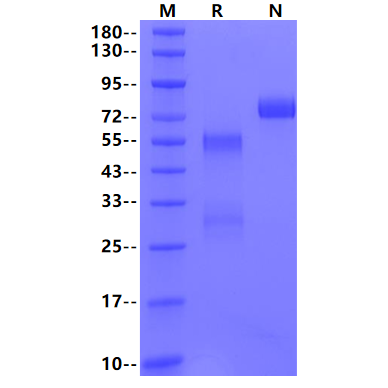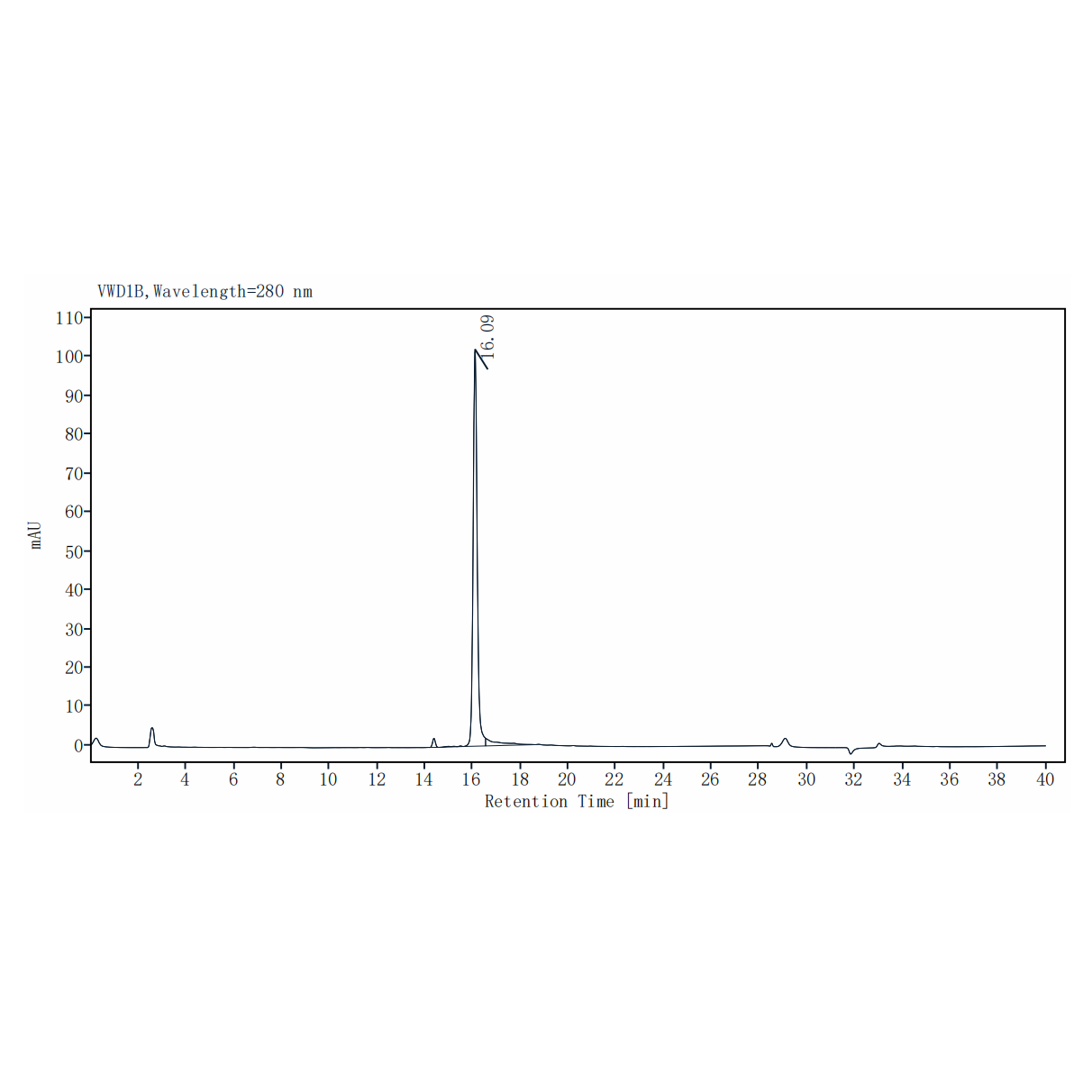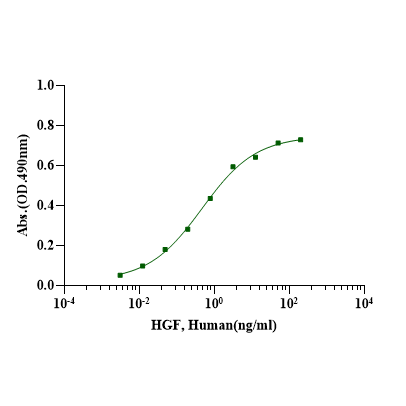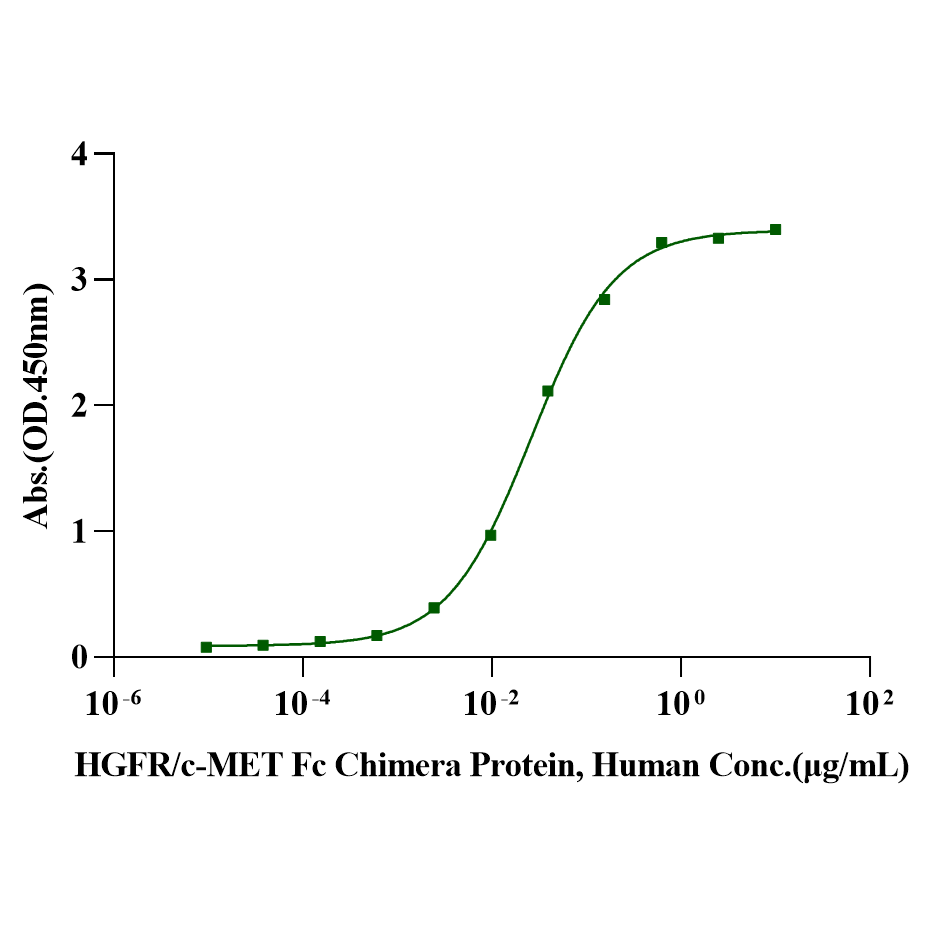Measured in a cell proliferation assay using 4MBr‑5 rhesus monkey epithelial cells. The EC50 for this effect is less than 1ng/ml.
Product Details
Product Details
Product Specification
| Species | Human |
| Synonyms | Hepatocyte growth factor; HPTA; HGF; SF; Scatter factor; Hepatopoietin-A |
| Accession | P14210 |
| Amino Acid Sequence | Gln32-Ser728 |
| Expression System | CHO |
| Molecular Weight | 80 kDa (Non-Reducing) |
| Purity | >95% by SDS-PAGE |
| Endotoxin | <0.1EU/μg |
| Conjugation | Unconjugated |
| Tag | No Tag |
| Physical Appearance | Lyophilized Powder |
| Storage Buffer | PBS, PH7.4 |
| Reconstitution | Reconstitute at 0.1-1 mg/ml according to the size in ultrapure water after rapid centrifugation. |
| Stability & Storage |
· 12 months from date of receipt, lyophilized powder stored at -20 to -80℃. · 3 months, -20 to -80℃ under sterile conditions after reconstitution. · 1 week, 2 to 8℃ under sterile conditions after reconstitution. · Please avoid repeated freeze-thaw cycles. |
| Reference | 1、Review Front Pharmacol . 2022 Mar 17:13:808855. eCollection 2022. |
Background
HGF, is a pleiotropic protein in the Plasminogen subfamily of S1 peptidases and contains 4 kringle domains, 1 PAN domain and 1 peptidase S1 domain. HGF is secreted as an inactive 728 amino acid (aa) single chain propeptide. It is cleaved after the fourth Kringle domain by a serine protease to form bioactive disulfide-linked HGF with a 60 kDa alpha and 30 kDa beta chain. HGF binds heparan-sulfate proteoglycans and the widely expressed receptor tyrosine kinase, HGF R/c-MET. HGF regulates epithelial morphogenesis by inducing cell scattering and branching tubulogenesis. It can also alter epithelium morphology by the induction of nectin-1 alpha ectodomain shedding, an adhesion protein component of adherens junctions. HGF regulates cell growth, cell motility, and morphogenesis by activating a tyrosine kinase signaling cascade after binding to the proto oncogenic c-Met receptor. HGF is secreted by mesenchymal cells and acts as a multi-functional cytokine on cells of mainly epithelial origin. Its ability to stimulate mitogenesis, cell motility, and matrix invasion gives it a central role in angiogenesis, tumorogenesis, and tissue regeneration.
Picture
Picture
Bioactivity
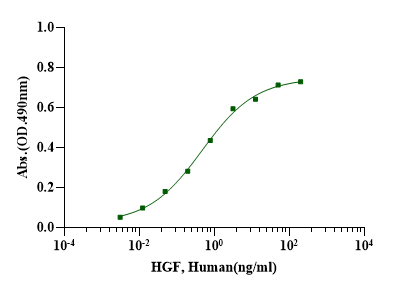
SDS-PAGE
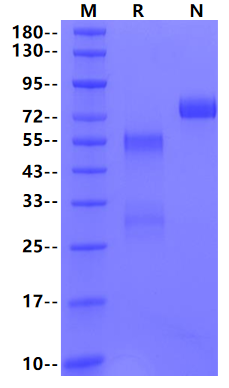
2μg (R: reducing condition, N: non-reducing condition).
RP-HPLC
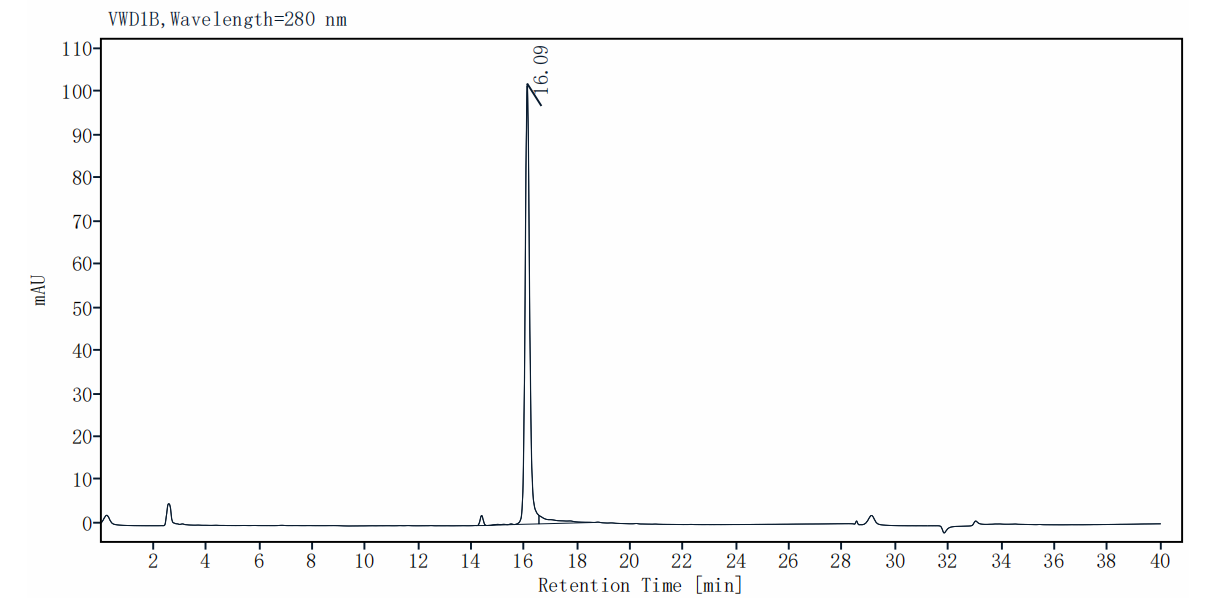
92.789%
ELISA
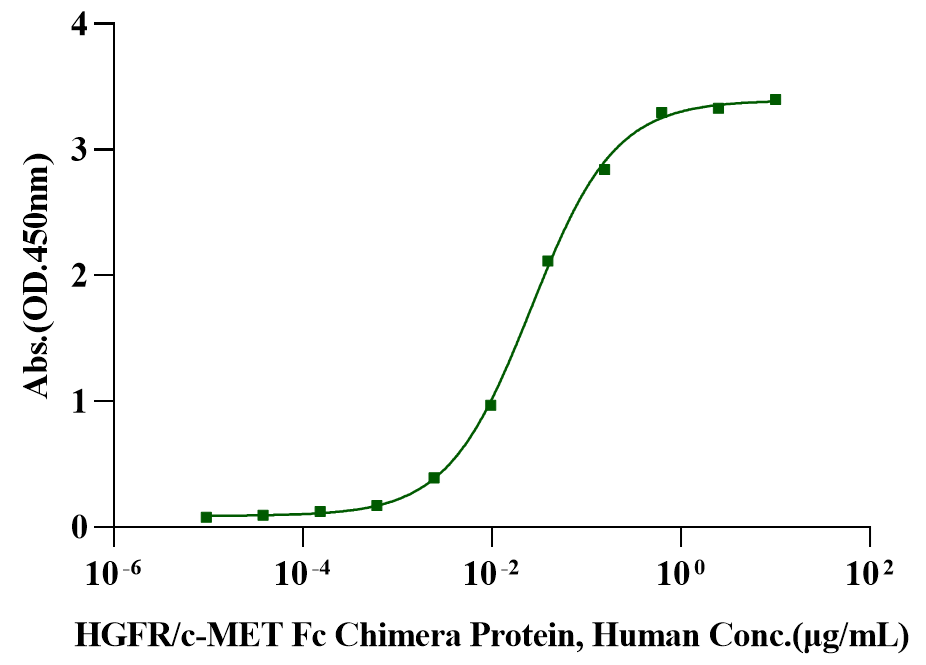
Immobilized HGF Protein, Human (Cat. No. UA040194) at 2.0μg/mL (100μL/well) can bind HGFR/c-MET Fc Chimera Protein, Human (Cat. No. UA010829) with EC50 of 23.39-29.12 ng/mL.
